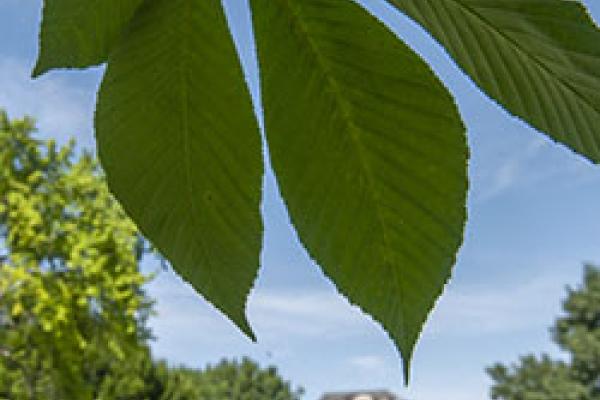
Environmental Science 7899 – Issues in Environmental Sciences
Watch the live seminar remotely via CarmenConnect
Seminar Chair: Gil Bohrer, bohrer.17@osu.edu
Seminar Coordinators: Michelle Smith, straley.23@osu.edu; Yanting Guo, zhao.1093@osu.edu
Course Requirements
This course is graded S/U. Satisfactory participation in this course includes all of the following:
- Attentive and active participation in lectures and discussion.
- Attendance at all classes, with one excused absence. If you must miss more than one class, see Dr. Bohrer.
- Advance reading for any seminars for which it is required
Physical and Chemical Transformations to Organic Aerosol Emitted from Controlled Laboratory Fires and Prescribed Real-World Fires
By Dr. Andrew May, The Ohio State University,Department of Civil, Environmental and Geodetic Engineering
Open biomass burning is estimated to be the largest source of atmospheric fine carbonaceous particulate matter and the second largest source of atmospheric non-methane organic compounds on a global scale. Thus, fires may significantly impact regional air quality and global climate. The majority of the emissions are reactive with atmospheric oxidizers such as the hydroxyl radical (OH), and a substantial fraction are semi-volatile; hence, these compounds will transform with chemical and physical perturbations in the atmosphere. This presentation focuses on a recent laboratory investigation of biomass burning emissions that was designed to investigate gas-particle partitioning of primary organic aerosol (POA) as well as secondary organic aerosol (SOA) formation with exposure to the OH radical. Results indicate that roughly 50% of the POA will evaporate with dilution to typical atmospheric concentrations, while SOA produced within a smoke plume may equal the emitted POA mass concentration. These results are then used to interpret airborne smoke measurements collected over prescribed fires in South Carolina.
Dr. Andrew May is a Senior Research Associate in the Department of Civil, Environmental and Geodetic Engineering at The Ohio State University. He earned his B.E. in Chemical Engineering from the University of Delaware in 2007, M.S. in Civil & Environmental Engineering from Clarkson University in 2009, and Ph.D. in Mechanical Engineering from Carnegie Mellon University in 2012. He spent one year completing post-doctoral work at Carnegie Mellon, followed by a one year post-doctoral research position in the Department of Atmospheric Science at Colorado State University. He joined Ohio State University in his current position in August 2014 and will transition to a tenure-track faculty position effective September 2015. His research interests include emissions from combustion sources such as motor vehicles and biomass burning as well as atmospheric pollutant transformations.
